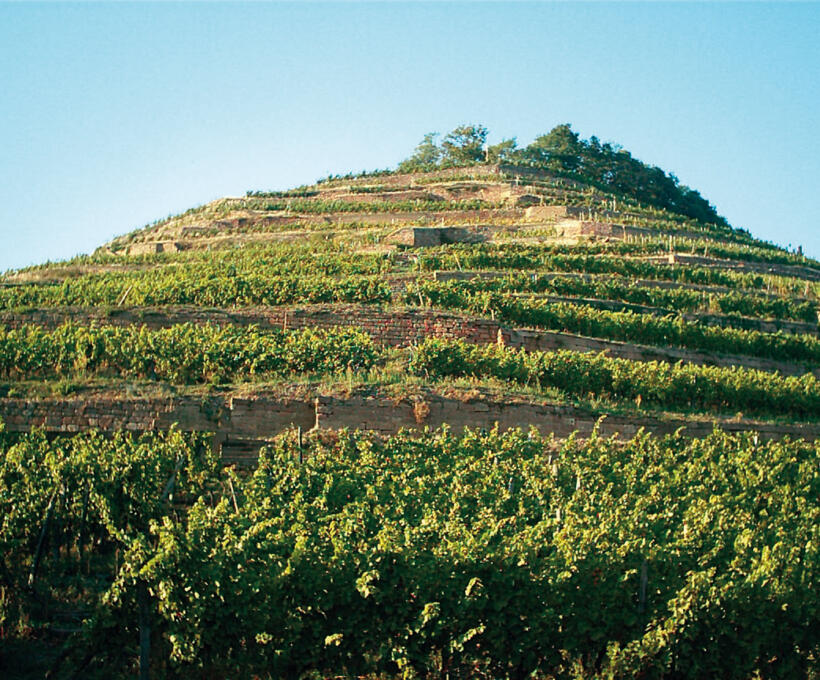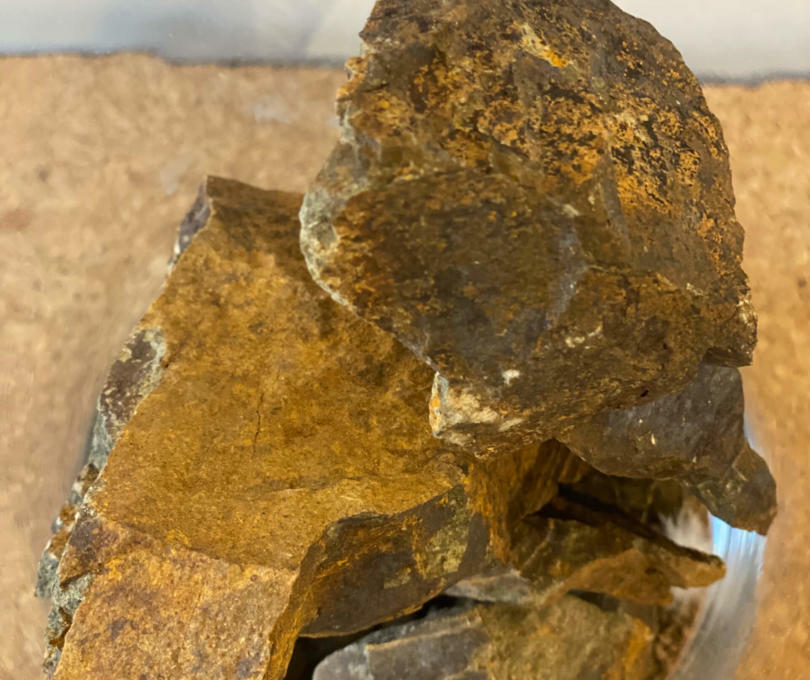The Nature
Regardless the varietal present on this terroir, the sandstone-volcanic, light and sandy soil of Kitterlé only gives a rather limited yield, stimulating a great concentration of aromas which is ideal for long-lasting wines.
Location
Kitterlé Grand Cru is located on the municipality of Guebwiller, the only one in this wine-growing area able to boast producing 4 Grands Crus: Kessler, Saering, Spiegel and Kitterlé. This colossal rocky area which outlines an overhand on the Unterlinger massif, has various exposures ( south, south-east and south-west) absorbing sunrays from sunrise to sunset. Man-made dry stone walls sit upon these often 45°-slanted steep slopes, perfectly espousing the soil variations and know-how. The only vineyard work possible here is on terraces.
Soil
Kitterlé soil is light, sandy and very porous. Its substrate is formed of coarse Vosges sandstone and quartzite conglomerates from the middle Bundsandstein period. Upon reaching the peak, levels of fine micaceous sandstone and clay lenses are sometimes found interstratified. At its west end, the sandstone-volcanic soil comes from carboniferous graywacke. Kitterlé is a poor and sandy terroir which can never produce large quantities of grapes. But these poor soils combined with optimum sunshine boost the concentration of aromas in berries and gives wines which can be kept for a long time.
Microclimate
Well sheltered from the north-sector winds by the Vosges mountain range, it has moderate rainfall (about 700mm per year) and has exceptional sunshine thanks to its good exposure and the extremely steep hillside.
Grape varieties
Gewurztraminer, Pinot Gris and Riesling share Kitterlé. The areas located to the extreme west with colder climates have planted Riesling. More aerated, facing south is a good area for Pinot Gris. And then the most favourable area for botrytis is where Gewurztraminer is found.


